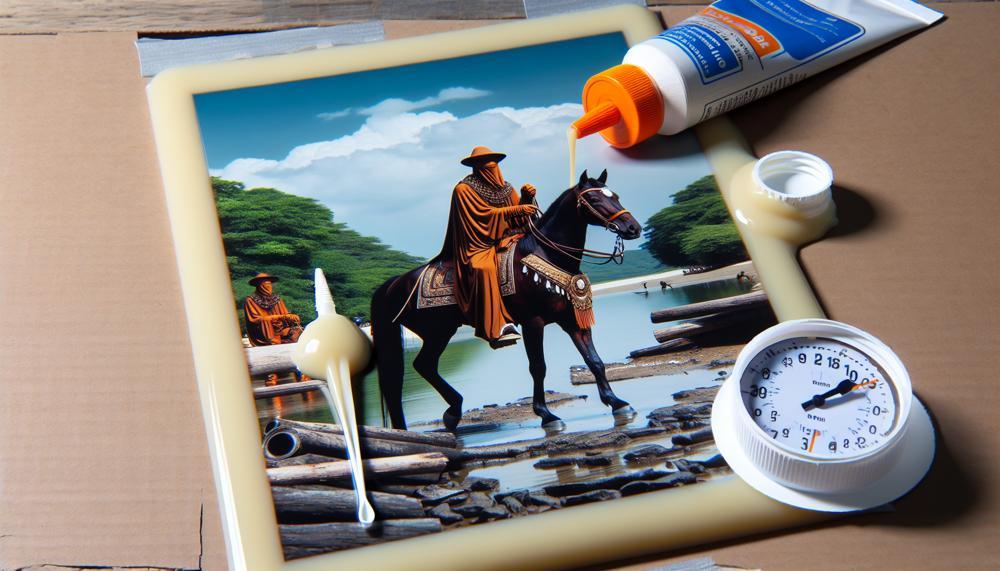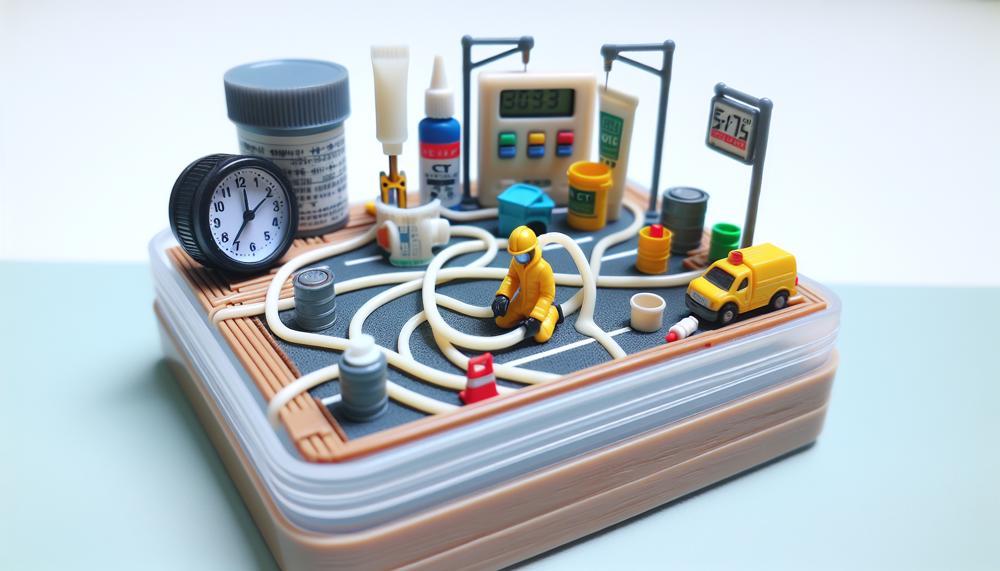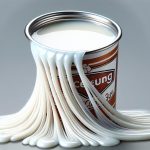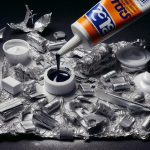Are you tired of anxiously waiting for your PVC glue to dry? Do you find yourself constantly checking and rechecking if it’s ready to use? Well, fret not, my fellow DIY enthusiasts and professionals.
The drying time of PVC glue is a common concern that plagues many of us.
And let’s be real, nobody wants to waste precious time waiting for glue to set when there are projects to be completed.
In this blog post, we will explore the world of PVC glue and its drying time. We’ll uncover the factors that influence how long it takes for PVC glue to dry, along with some expert tips and tricks to speed up the process.
In this guide, we’ll delve into:
- What exactly is PVC glue and why is it a popular choice
- The various factors that impact the drying time of PVC glue
- A breakdown of how long it typically takes for PVC glue to completely dry
- Proven techniques for speeding up the drying time
So go ahead and grab your favorite beverage as we dive into this informative journey.
Table of Contents
- 1 What Factors Affect the Drying Time of PVC Glue?
- 2 How Long Does It Take for PVC Glue to Dry?
- 3 Is It Necessary to Wait 2 Hours for PVC Glue to Dry?
- 4 What Happens if I Don’t Wait for the Recommended Drying Time?
- 5 How Can I Ensure Maximum Strength and Durability of a Joint?
- 6 What Are Some Tips for Working with PVC Glue?
- 7 What Are the Benefits of Waiting for PVC Glue to Fully Cure?
- 8 How Can Environmental Conditions Affect the Drying Time of PVC Glue?
- 9 Conclusion
What Factors Affect the Drying Time of PVC Glue?
The drying time of PVC glue is greatly affected by temperature and humidity levels. These two factors play a vital role in the chemical reaction that occurs during the drying process, ultimately determining how strong and high-quality the bond between materials will be.
For optimal results, it is recommended to have a temperature range of 60-90 degrees Fahrenheit (15-32 degrees Celsius) when drying PVC glue.
Any temperatures outside of this range can significantly impact the drying time, with lower temperatures resulting in longer drying times and higher temperatures resulting in quicker drying times. Additionally, humidity levels also play a crucial role in the drying process.
High humidity can slow down the evaporation process and prolong the drying time, while low humidity levels can cause the glue to dry too quickly.
How Long Does It Take for PVC Glue to Dry?
The drying time of PVC glue can be influenced by various factors such as the type of glue, temperature and humidity levels, thickness of materials, condition of the PVC surface, and amount of glue used.
To ensure a strong and durable bond, it is recommended to wait at least 24 hours before using bonded materials. However, the specific drying time may vary depending on the type of PVC glue and environmental conditions.
Therefore, it is important to carefully consider these factors and follow the manufacturer’s instructions for optimal results.
- One of the major factors that can affect the drying time of PVC glue is the type of glue used. Different brands and types have varying drying times, so it is crucial to use the correct type of glue for the specific project at hand.
- Moreover, temperature and humidity levels can also play a significant role in how quickly PVC glue dries. Higher temperatures and lower humidity can accelerate drying, while lower temperatures and higher humidity can slow it down. This is why it is important to consider the weather conditions when working with PVC glue.
- Another factor to keep in mind is the thickness of materials being bonded together. Thicker materials take longer to dry compared to thinner ones, so it is important to adjust the drying time accordingly.
- The condition of the PVC surface is also an important factor in determining drying time. Newer PVC materials tend to have smoother surfaces that allow for better adhesion and faster drying. However, older or weathered materials may have rougher surfaces that can hinder proper bonding and extend drying time.
- Lastly, the amount of glue used can also impact the drying time. Applying too much glue can result in longer drying times, while using too little may not provide enough adhesive strength. It is essential to follow the manufacturer’s guidelines for proper application techniques to ensure optimal results.
Is It Necessary to Wait 2 Hours for PVC Glue to Dry?
The answer is, absolutely. It may seem like a long time, but this waiting period allows the adhesive to fully cure and create a solid bond between the joined materials. Rushing the drying process can result in a weak bond that may fail over time, leading to potential leaks or damage.
There are a few methods that claim to speed up the drying process of PVC glue. However, it is crucial to note that these techniques should be used with caution and may not be suitable for all types of PVC glue.
- Increase the temperature: PVC glue cures faster in warm temperatures. If possible, try working in a warm environment or use a heat gun to gently warm the glued area. But be careful not to overheat the area as this may cause the glue to dry too quickly, resulting in a weaker bond.
- Use an accelerator: There are accelerators designed specifically for PVC glue that claim to speed up the drying process. However, these should be used sparingly and according to the manufacturer’s instructions.
- Use less glue: Using excess glue can prolong the drying time as it takes longer for excess glue to cure. Make sure to only use the recommended amount of glue for your project.
- Opt for instant set glue: As mentioned earlier, there are two types of PVC glue – instant set and slow set. Instant set glues dry within seconds, making them a quicker option if time is of the essence. However, they may not provide as strong of a bond as slow set glues.
Overall, it is essential to allow PVC glue enough time to dry properly. Rushing the process can lead to weaker bonds and potential damage.
What Happens if I Don’t Wait for the Recommended Drying Time?
When working with PVC glue, it’s important to remember that following the recommended drying time is crucial for a successful and safe bond.
Not waiting for the recommended drying time can result in several negative consequences, including inadequate adhesion, potential damage to the PVC material, and health hazards.
Firstly, not allowing enough time for the PVC glue to dry can lead to inadequate adhesion. This means that the bond between the materials will not be strong enough and could easily break apart. This can be a major issue if you are using PVC glue for any structural repairs or projects.
Moreover, not waiting for the recommended drying time can also result in potential damage to the PVC material itself. The solvent in PVC glue needs time to dry properly in order to form a strong bond. If this process is rushed, it can cause a reaction with the plastic and result in discoloration, warping, or even cracks in the material.
Lastly, not following the recommended drying time can also pose health hazards. The toxic fumes emitted during the drying process can be harmful if inhaled, causing respiratory issues or irritation to the eyes and skin. It’s important to allow enough time for the glue to dry and for these fumes to dissipate before handling the materials.
| Inadequate Adhesion | If the recommended drying time is not followed, the PVC glue may not have enough time to fully bond the materials together, resulting in a weak and easily breakable bond. |
| Potential Damage to PVC Material | The solvent in PVC glue can react with the plastic if it is not given enough time to dry, causing discoloration, warping, or cracks in the material. |
| Health Hazards | The toxic fumes emitted during the drying process can be harmful if inhaled, leading to respiratory issues or irritation to the eyes and skin. |
How Can I Ensure Maximum Strength and Durability of a Joint?
Creating a robust and long-lasting joint when using PVC glue requires a deep understanding of the properties of PVC materials and selecting the appropriate glue for the task. Here are some expert techniques you can use to ensure maximum strength and durability of a joint when using PVC glue:
- Choose the correct type of PVC glue: It’s crucial to note that not all PVC glues are created equal, and each type may have different properties and drying times. Selecting a glue specifically designed for bonding PVC materials, such as Oatey PVC Cement or Weld-On 711 PVC Cement, is essential for achieving the desired results.
- Prepare the surfaces thoroughly: Before applying the glue, it’s essential to clean and dry the surfaces that will be joined. Any dirt, dust, or moisture present can weaken the bond between the materials, leading to a weaker joint.
- Apply the glue evenly: Using a brush or applicator, apply the glue evenly on both surfaces to promote maximum bonding between the materials.
- Join the materials within the recommended drying time: It’s critical to join the materials within the specified drying time, typically around 15-30 minutes. This timeframe is crucial in achieving maximum strength and durability of the joint.
- Secure the joint: Once you have joined the materials, apply pressure to ensure a tight fit between the two surfaces. You can use clamps or weights to hold the materials together until the glue has fully cured.
- Allow for proper curing time: PVC glues may have varying curing times, but it is generally recommended to wait at least 24 hours before putting any stress on the joint.
- Consider reinforcing with screws or nails: If you want to further enhance the strength and durability of your joint, you can reinforce it with screws or nails in addition to using PVC glue.
To ensure your PVC joint is as strong and durable as possible, it’s crucial to follow these techniques. Keep in mind that proper technique alone may not be enough in certain situations.
It’s essential to also consider the type and thickness of the PVC material being used and adjust your techniques accordingly.
Additionally, using high-quality PVC glue and following the manufacturer’s instructions is key in achieving maximum strength and durability of a joint when working with PVC materials.
What Are Some Tips for Working with PVC Glue?
To successfully and securely handle PVC glue, here are some guidelines to follow:
- Make sure that both surfaces of the objects you are connecting are clean, dry, and fit closely. This will guarantee a strong bond between the two pieces.
- Consider using a Surface Activator to further reinforce the bond. This can be applied to both surfaces and left to dry for approximately one minute before gluing.
- Wear nitrile work gloves and safety goggles when working with PVC glue to protect your skin and eyes from any potential splashes or fumes.
- Work in a well-ventilated location, such as a garage or shed with the door open. This will prevent any harmful fumes from accumulating.
- Keep the PVC glue away from heat or direct sunlight before using it. Exposure to high temperatures can affect the glue’s effectiveness.
- Always cover the PVC glue when not in use to prevent it from drying out.
- Before gluing, wipe the pipes with a cool cloth to cool them down. This will help ensure they fit together correctly.
- After gluing, wipe off any excess solvent or glue from the exterior of the joints. This will create a neater and more professional finish.
Remember to follow specific instructions for the type of PVC glue you are using, as different brands may have different application and curing times.
By adhering to these tips, you can effectively and safely work with PVC glue for all your plumbing or DIY projects.
What Are the Benefits of Waiting for PVC Glue to Fully Cure?

| Robust and long-lasting adhesion | If you take the time to fully cure PVC glue, you will achieve a robust and long-lasting bond between materials, which minimizes the chances of leaks or breaks in the joint. | With a complete chemical reaction between the glue and materials, the bond formed is tough and able to withstand stress and pressure without giving way. |
| Enhanced handling and stability | During the curing process, the glue may still be a little sticky or soft, making it challenging to handle or shift the glued materials without disrupting the bond. | Fully cured PVC glue creates a stable and solid bond, making it easier to handle and manipulate materials without compromising the strength of the bond. |
| Prevents future problems | Using PVC glue before it has fully cured can lead to weak spots or gaps in the joint, which can result in leaks or structural failures over time. | By allowing the glue to fully cure, you are ensuring a secure and reliable bond that reduces the risk of any future issues. |
There are several benefits to waiting for PVC glue to fully cure before use. These include achieving a strong bond, improving handling and stability of materials, and preventing any potential problems in the future.
It is highly recommended to adhere to the recommended curing time for optimal results in plumbing or DIY projects.
How Can Environmental Conditions Affect the Drying Time of PVC Glue?
The drying process of PVC glue can be heavily influenced by environmental conditions such as temperature, humidity, and air flow.
These factors are crucial as they impact the chemical reaction between the glue and materials, resulting in a strong and long-lasting bond.
Temperature plays a significant role in the drying time of PVC glue, with warmer temperatures accelerating the process while cooler temperatures prolong it. Similarly, humidity levels also affect the drying time, where high levels can slow it down and low levels can speed it up.
Additionally, proper air flow is necessary to remove excess moisture from the air, expediting the drying process when adequate and prolonging it when lacking.
To achieve successful bonding and a timely drying process, it is essential to consider these environmental conditions when working with PVC glue. Balancing temperature, humidity, and air flow is crucial as they all play a role in achieving optimal results.
Below is a table summarizing how each condition affects the drying time of PVC glue:

| Environmental Condition | Effect on Drying Time |
| High Temperature | Speeds up the drying process |
| Low Temperature | Prolongs the drying process |
| High Humidity | Slows down the drying process |
| Low Humidity | Speeds up the drying process |
| Good Air Flow | Expedites the drying process |
| Poor Air Flow | Prolongs the drying process |
It is crucial to find a balance between these environmental conditions when using PVC glue to achieve optimal results. By taking into account temperature, humidity, and air flow, you can ensure a timely and successful drying process for your PVC glue.
Additionally, it is important to regularly check and adjust these conditions as they can fluctuate and impact the drying process.
Conclusion
In conclusion, the drying time of PVC glue is a crucial aspect to consider for both DIY enthusiasts and professionals.
Rushing the process can result in inadequate adhesion, potential damage to the PVC material, and even health hazards. It is essential to carefully assess factors such as temperature and humidity levels before applying PVC glue.
Proper application techniques and following the manufacturer’s instructions are also vital for achieving a strong and durable bond between materials. For added strength and durability, consider reinforcing joints with screws or nails.
So, next time you find yourself anxiously waiting for your PVC glue to dry, keep these expert tips in mind to become a true connoisseur of PVC glue drying time.






